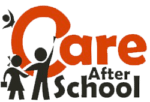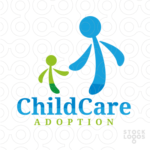Research
- General Research (46)
- High School Research (10)
This brief, examines the current teacher shortage facing our schools, the impact this shortage is having on our rapidly changing educational system, and ways afterschool programs can help meet the need for recruiting and retaining new teachers. It is one in a series of Issue Briefs sponsored by the MetLife Foundation that addresses the benefits afterschool programs provide to children, families and communities.
This brief explores the various ways afterschool programs create linkages between school and home for students and parents. It is one in a series of Issue Briefs sponsored by the MetLife Foundation that addresses the benefits afterschool programs provide to children, families and communities.
Each year, the Federal Interagency Forum on Child and Family Statistics has published a report on the well-being of children and families. The Forum alternates publishing a detailed report, America’s Children: Key National Indicators of Well-Being, with a summary version that highlights selected indicators.
Not only do arts activities help draw students to after school programs, but, as this brief explains, after school programs with an arts component can be used as an outlet for self expression, a means to uniting community partners, and a tool for academic and skills development.
As the Australian Council of State School Organisations (ACSSO), they represent the interests of the families and communities of more than 2.4 million children attending government schools in Australia. They are one of the oldest continuously operating parent organizations in Australia and possibly the world. They were formed in 1947 to bring together various state and territory parent groups to develop national policies reflecting the way families wanted public education to be offered for their children.
This NCES report from the National Household Education Surveys Program presents data on participation in after school activities and programs in the United States. The data are from the After-School Programs and Activities Survey (ASPA) of the 2005 National Household Education Surveys Program.
This resource provides research and case studies on engaging diverse families, especially engaging African-American and Hispanic families in large, urban public school districts.
Youth violence is a serious problem that can have lasting harmful effects on victims and their families, friends, and communities. The goal for youth violence prevention is to stop youth violence from happening in the first place.
Preventing youth violence requires addressing factors at all levels of the social ecology—the individual, relational, community, and societal levels.
CDC’s technical package, A Comprehensive Technical Package for the Prevention of Youth Violence and Associated Risk Behaviors, highlights strategies based on the best available evidence to help states and communities prevent or reduce youth violence. The strategies are intended to work in combination and reinforce each other. Strategies and their corresponding approaches are listed in the table below.
An investigation of the different types of child care arrangements, including unsupervised ‘self-care’ that has school-age children home alone after school without supervision or structured activities.
The Children, Youth, and Families At-Risk (CYFAR) is a national initiative that provides funding for Sustainable Community Projects (SCP). These projects are developed to meet locally identified needs, are research-based, and provide quality programs for vulnerable, at-risk, low-income, and low-resource children, youth, and families to promote positive life outcomes. This initiative was developed in collaboration with The United States Department of Agriculture’s National Institute of Food and Agriculture through a cooperative agreement with The University of Minnesota.
The ChildTrauma Academy is a Community of Practice working to improve the lives of high-risk children through education, research, and the dissemination of innovation.
Civic engagement involves “working to make a difference in the civic life of one’s community and developing the combination of knowledge, skills, values and motivation to make that difference. It means promoting the quality of life in a community, through both political and non-political processes.” Civic engagement includes both paid and unpaid forms of political activism, environmentalism, and community and national service. Volunteering, national service, and service-learning are all forms of civic engagement.
According to the 2006 National Civic and Political Health Survey, seven percent of 15- to 25-year-old Americans participated in 10 or more community engagement or political activities within the previous year.3 When compared to their peers who report no civic engagement activities, this group was more likely to be African-American, urban, attend church regularly, from a family with parents who volunteer, a current student (in college or high school), and from college-educated home.
AmeriCorps (formerly the Corporation for National and Community Service, or CNCS) is a federal agency that sends people power and funding to communities across the country for causes such as disaster response, the opioid crisis, and education.
Participation in civic engagement activities can help youth become better informed about current events. For example, according to the 2006 National Civic and Political Health Survey, approximately a quarter of youth who had not participated in civic engagement activities within the last year did not answer any questions regarding current politics correctly.
Click on the link to learn more.











